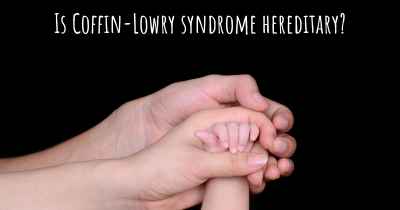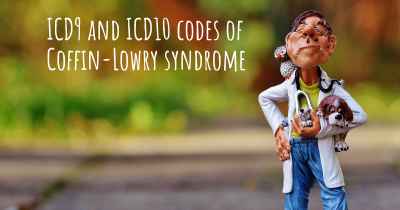Which are the symptoms of Coffin-Lowry syndrome?
See the worst symptoms of affected by Coffin-Lowry syndrome here

Symptoms of Coffin-Lowry Syndrome
Coffin-Lowry syndrome is a rare genetic disorder that primarily affects males. It is characterized by intellectual disability, distinctive facial features, and various physical and developmental abnormalities. The severity of symptoms can vary widely among affected individuals, even within the same family.
Intellectual Disability
Intellectual disability is a hallmark feature of Coffin-Lowry syndrome. It is typically moderate to severe, although the level of impairment can vary. Individuals with this syndrome often have delayed speech and language development, as well as learning difficulties. However, it's important to note that intellectual abilities can vary significantly among affected individuals.
Facial Features
Coffin-Lowry syndrome is associated with distinctive facial features that become more pronounced with age. These features may include a prominent forehead, widely spaced and downward-slanting eyes, a flat nasal bridge, a wide mouth with thick lips, and a prominent chin. The ears may also be large and low-set. These facial characteristics can help in the clinical diagnosis of the syndrome.
Physical Abnormalities
Individuals with Coffin-Lowry syndrome may exhibit various physical abnormalities. These can include short stature, skeletal abnormalities such as abnormal curvature of the spine (scoliosis) or other bone deformities, and joint stiffness. Some individuals may have soft, fleshy hands with short, tapered fingers. Additionally, individuals with Coffin-Lowry syndrome may have difficulties with coordination and fine motor skills.
Developmental Delays
Developmental delays are common in individuals with Coffin-Lowry syndrome. These delays can affect motor skills, such as sitting, crawling, and walking. Some individuals may experience delays in achieving developmental milestones, such as speaking their first words or being toilet trained. However, it's important to note that the rate and extent of developmental delays can vary among affected individuals.
Behavioral and Psychological Characteristics
Individuals with Coffin-Lowry syndrome may exhibit certain behavioral and psychological characteristics. These can include hyperactivity, attention deficit disorder (ADD), and autistic-like behaviors. Some individuals may also have difficulties with social interactions and exhibit aggressive or self-injurious behaviors. However, it's important to note that these characteristics can vary widely among affected individuals.
Other Possible Features
While not always present, there are several other features that can be associated with Coffin-Lowry syndrome. These can include hearing loss, vision problems, heart abnormalities, seizures, and respiratory infections. It's important to note that not all individuals with Coffin-Lowry syndrome will have these additional features, and the presence and severity can vary.
In conclusion, Coffin-Lowry syndrome is a rare genetic disorder characterized by intellectual disability, distinctive facial features, physical abnormalities, developmental delays, and various behavioral and psychological characteristics. It is important to consult with a healthcare professional for a proper diagnosis and to develop an appropriate management plan tailored to the individual's specific needs.








